| Hemp | [German version] |
Table of contents |
|
| General: | ||
| Product information | ||
| Packaging | ||
| Transport | ||
| Container transport | ||
| Cargo securing | ||
Product information
Product name
| German | Hanf, Weichhanf |
| English | Hemp |
| French | Chanvre |
| Spanish | Cáñamo |
| Scientific | Cannabis sativa |
| CN/HS number * | 5302 ff. |
(* EU Combined Nomenclature/Harmonized System)
Product description
Hemp belongs to the category fibers/fibrous materials, which are classified as follows [24]:
Plant hairs:
| Cotton seed-hairs | |
| Kapok tree fruit hairs |
Stalk fibers from dicotyledonous plants (soft fibers):
| Flax, ramie (fine spinnable fibers) | |
| Hemp, jute, kenaf (coarse spinnable fibers) |
Leaf fibers (hard fibers):
| Sisal, Manila hemp, palm fibers (poor spinning characteristics) |
Bast:
| Linden, raffia palm, willow |
Basketwork material:
| Coconut fiber, rattan cane, halfa, piassava, esparto |
Hemp is a vegetable fiber obtained from the hemp plant (Cannabis sativa), which is native to central Asia. The hemp plant is a member of the hemp family (Cannabaceae).
The plant grows to a height of 3 – 4 m. The male plants (fimble hemp) ripen earlier and must be harvested earlier. These plants yield particularly fine fibers. The female plants are more highly branched and bear denser foliage.
The whitish to yellow fibers, which are highly water-resistant and have good tensile strength, reach a length of up to 50 mm. Similarly to cotton, the majority of hemp consists of cellulose.
Hemp is also known as soft hemp and should not be confused with Manila hemp or sisal hemp, which are hard fibers.
Processing methods are similar to those for flax. Cold water retting takes 20 – 30 days, hot water retting 3 – 4 days. Due to the greater hardness of the hemp fiber, mechanical processing is more difficult than for flax. The spinnable length of the hemp fiber is 70 – 80 cm.
The internal structure of the hemp stalk is largely similar to that of the flax stalk. The processable fiber is somewhat larger because the hemp stalk is substantially longer. Hemp fibers have oval or rounded polygonal cross-sections with an irregular lumen, which is often narrowed to a slit.
The crude fibers are combed with hatchels to yield the long spinnable fibers, the short fibers (pluckings or tow) remaining between in the steel teeth of the comb.
Quality / Duration of storage
The best varieties yield white or gray fibers with pronounced luster. Lower grade varieties give rise to yellowish, greenish or dark fibers.
Wet, moist or oil-stained bales must be rejected prior to loading because depreciation due to discoloration, mustiness and corrosion under the metal straps may occur during longer voyages.
Hemp is normally of a whitish to yellowish color. Excessively moist hemp discolors to black.
Subject to compliance with the appropriate temperature and humidity/moisture conditions, duration of storage is not a limiting factor as regards transport and storage life.
Intended use
Hemp has good tensile strength and is primarily used in the production of ropes, gray string and cordage. Hemp fibers are converted into coarse fabrics, such as sailcloth, tarpaulins or mattress ticking. The backing fabric for carpets is also made from hemp fibers.
„Benares hemp“ (Bengal hemp) yields fibers of moderate quality and is converted into cloths, bags, ropes, cords etc.
Indian hemp“ is used not only for fiber production but also as the raw material for the production of various medical preparations.
Figures
(Click on the individual Figures to enlarge them.)
 Figure 1 |
 Figure 2 |
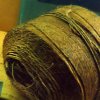 Figure 3 |
 Figure 4 |
Countries of origin
This Table shows only a selection of the most important countries of origin and should not be thought of as exhaustive.
| Europe | Serbia, Hungary, Italy, Russia, Poland, Bulgaria, Romania, France, Turkey, Sweden, Germany |
| Africa | |
| Asia | India, China, South Korea |
| America | Chile |
| Australia |
Back to beginning
Packaging
Hemp is transported in bales weighing 100 – 200 kg. The bales are wrapped in jute fabric to protect them from contamination and moisture and strapped with steel strapping.
| Marking of packages | ||
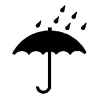 Keep dry |
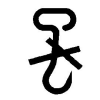 Use no hooks |
 Keep away from heat (solar radiation) |
Back to beginning
Transport
Symbols
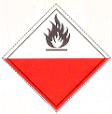 Spontaneously combustible, Class 4.2 IMDG Code |
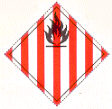 Fire hazard (Flammable solids), Class 4.1 IMDG Code |
 General cargo |
Means of transport
Ship, truck, railroad
Container transport
Standard containers , subject to compliance with water content of goods, packaging and flooring.
Cargo handling
In damp weather (rain, snow), the cargo must be protected from moisture, since hemp is strongly hygroscopic and readily absorbs moisture. On longer voyages, this may result in discoloration, mustiness and corrosion of the steel strapping. In addition, hemp may swell by absorbing water vapor, resulting in an increase in volume of approx. 25 – 30%.
Do not use hooks for cargo handling, since they may lead to sparking when they come into contact with the strapping. In addition, smoking is absolutely prohibited during cargo handling.
Stowage factor
| 2.27 – 3.40 m3/t (bales) [1] | |
| approx. 2.41 m3/t (Bengal hemp, bales) [1] | |
| approx. 2.83 m3/t (Indian hemp, bales) [1] | |
| 2.26 – 3.68 m3/t (ditto, bales, compressed) [14] | |
| 7.07 – 7.64 m3/t (ditto, bales, uncompressed)[14] |
Stowage space requirements
Cool, dry
Segregation
Fiber rope, thin fiber nets
Cargo securing
The cargo is to be secured in such a way that the bales or strapping are not damaged. Undamaged strapping is essential to maintain compression of the bales during transport. If the strapping is broken, compression is diminished, which at the same time results in an increased supply of oxygen to the inside of the bales. This in turn increases the risk of combustion or feeds a fire which has already started. Bursting or chafing of steel strapping may lead to sparking and external ignition.
Back to beginning
Risk factors and loss prevention
RF Temperature
Hemp requires particular temperature, humidity/moisture and possibly ventilation conditions (SC VI) (storage climate conditions).
Favorable travel temperature range: no lower limit – 25°C
Hemp must be stowed away from heat sources.
Every hold should be equipped with means for measuring temperature. Measurements must be performed and recorded daily.
Back to beginning
RF Humidity/Moisture
Hemp requires particular temperature, humidity/moisture and possibly ventilation conditions (SC VI) (storage climate conditions).
| Designation | Humidity/water content | Source |
| Relative humidity | 65% | [1] |
| Water content | 10 – 12% | [1] |
| 12% | [14] | |
| Maximum equilibrium moisture content | 65% | [1] |
Hemp behaves strongly hygroscopically (hygroscopicity). It must be protected from sea, rain and condensation water and also from high levels of relative humidity, if discoloration (blackening), mustiness and corrosion under the steel strapping are to be avoided.
Hemp fiber exhibits good absorbency and may absorb up to 30% water vapor without feeling damp. It is particularly resistant to the action of moisture.
Moisture measurements are recommended prior to loading. Moisture-damaged bales must not be accepted.
Back to beginning
RF Ventilation
Hemp requires particular temperature, humidity/moisture and possibly ventilation conditions (SC VI) (storage climate conditions).
If the product is loaded for shipment in a dry state, it does not have any particular ventilation requirements.
Problems arise if the product, packaging and/or ceiling/flooring are too damp. In this case, the following ventilation measures should be implemented:
Air exchange rate: 10 changes/hour (airing)
Since hemp very readily absorbs oxygen, before anybody enters the hold, it must be ventilated and a gas measurement carried out, since a shortage of oxygen may endanger life.
Back to beginning
RF Biotic activity
Hemp displays 3rd order biotic activity.
It belongs to the class of goods in which respiration processes are suspended, but in which biochemical, microbial and other decomposition processes still proceed.
Back to beginning
RF Gases
Hemp very readily absorbs oxygen. An oxygen shortage may therefore arise in closed holds and containers. Before anybody enters such holds, the holds must be ventilated and a gas measurement carried out.
An increase in CO2 and CO content indicates a cargo fire. The TLV of the hold air is 0.49 vol.%. As a result of the oxygen-rich lumen, bales often burn for weeks without being discovered.
Back to beginning
RF Self-heating / Spontaneous combustion
Hemp has an oil content of approx. 8.7% (waxes).
Hemp is assigned to Class 4.1 of the IMDG Code (Flammable solids). However, its specific characteristics and negative external influences (see below) may cause it to behave like a substance from Class 4.2 (Substances liable to spontaneous combustion) of the IMDG Code or ADR.
Its high cellulose content makes hemp particularly liable to catch fire through external ignition. Therefore, it must always be protected from sparks, fire, naked lights and lit cigarettes. Smoking is absolutely prohibited. Sparks may arise from bursting or chafing of the metal straps (and also as a result of inadequate cargo securing in the hold or container) and cause a cargo fire. In accordance with the IMDG Code, ventilation openings leading into the hold should be provided with spark-proof wire cloth.
Normally, spontaneous combustion of hemp occurs only rarely. Spontaneous combustion may, however, occur as a result of exposure to moisture, animal and vegetable fats/oils, oil-bearing seeds/fruits, copra and raw wool. As a result of the very well developed oxygen-rich lumen of the hemp fiber and the oxygen supply contained in the capillary cavity system, smoldering fires inside the bales often last for weeks.
Fire-fighting is best performed using CO2 . It is very difficult to extinguish a fire because of the excess of oxygen in the hemp fiber, which maintains the fire from the inside. When fighting a fire, do not break the metal straps or open the bales, since relieving the compression increases the oxygen supply and makes it impossible to fight the fire effectively. If fire breaks out during cargo handling, powder or foam extinguishers may be used.
Water must not be used for fire-fighting, since the swelling capacity of the hemp fibers (up to 30% increase in volume) may cause damage to the hold or container walls.
Back to beginning
RF Odor
| Active behavior | Hemp has a characteristic slight, unpleasant odor. A conspicuous musty odor indicates that the hemp is too moist. The crude hemp fiber releases the odor typical of hemp. |
| Passive behavior | Hemp is sensitive to unpleasant or pungent odors. |
Back to beginning
RF Contamination
| Active behavior | Hemp does not cause contamination |
| Passive behavior | Hemp is sensitive to contamination by dust, dirt, fats/oils and rust as well as oil-containing goods, such as oil-bearing seeds/fruits, copra, raw wool etc., since oil-impregnated fibers promote self-heating/cargo fire. Holds or containers must accordingly be clean and in a thoroughly hygienic condition before loading. Residues from previous cargoes, such as ores, stones, coal, metal filings, fertilizers etc., result in losses. Rust contamination may be caused by rusty metal straps, among other things. Since rust hampers the spinning process, this represents a reduction in value. |
Back to beginning
RF Mechanical influences
Care must be taken to ensure that mechanical influences do not cause damage to strapping, which increases the risk of fire by relieving the compression of the bales and allowing a greater supply of oxygen.
Back to beginning
RF Toxicity / Hazards to health
Since hemp is highly oxygen-absorbent, a life-threatening shortage of oxygen may arise in the hold or container. Thus, before anybody enters the hold, it must be ventilated and, if necessary, a gas measurement carried out. The TLV for CO2 concentration is 0.49 vol.%.
Back to beginning
RF Shrinkage/Shortage
Unclearly marked bales may result in losses of volume due to incorrect delivery.
Back to beginning
RF Insect infestation / Diseases
No risk.
Back to beginning
